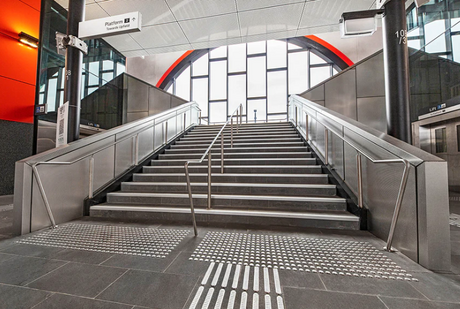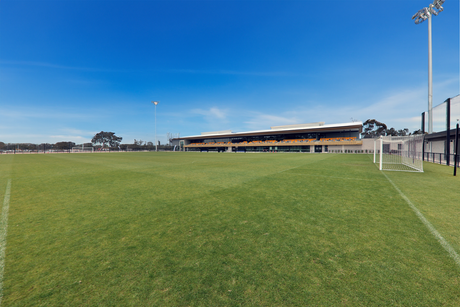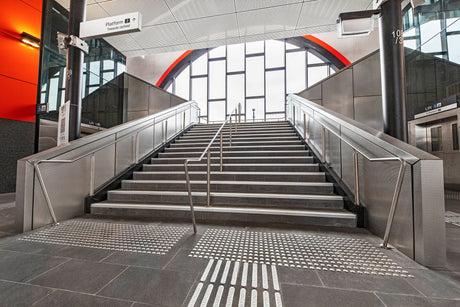Finding Their Way: Why Tactile Indicators Are Crucial in Australian Public Spaces
Imagine navigating a bustling shopping centre, a train station, or even your own workplace, without being able to see. Everyday landmarks and pathways transform into uncertain obstacles. This is the constant reality for many Australians who are blind or vision impaired.
Thankfully, a simple yet ingenious solution exists: tactile indicators. These textured ground surfaces, also known as Tactile Ground Surface Indicators (TGSIs), provide a vital sense of touch for people navigating their surroundings. They act as silent guides, offering a crucial layer of information that empowers safe and independent movement.
Beyond Convenience: A Necessity for Safety and Inclusion
The importance of tactile indicators goes far beyond mere convenience. They play a fundamental role in:
- Safety: By providing a clear warning of upcoming hazards like changes in elevation, stairs, or even revolving doors, tactile indicators help prevent accidents and injuries. They offer a crucial tactile cue, especially in situations where visual cues might be limited or obstructed.
- Confidence: Navigating unfamiliar environments can be daunting for anyone, but especially for those with vision limitations. Tactile indicators empower people to move around independently, fostering a sense of freedom and confidence. Imagine the difference between hesitantly feeling your way forward and confidently striding through a space, knowing exactly where you're going.
- Social Inclusion: Public spaces designed with accessibility in mind, including tactile indicators, enable everyone to participate in everyday activities. This fosters a more inclusive society where people with vision impairment can go about their daily lives without feeling excluded.
The Tactile Two-Step: Guiding and Warning
There are two main types of tactile indicators, each serving a distinct purpose:
- Directional Indicators: These linear patterns, often a row of bars or elongated rectangles, guide pedestrians along a safe path. You'll find them prominently placed in hallways, lobbies, and other open spaces, leading towards exits, elevators, or specific destinations.
- Warning Indicators: These textured surfaces, often with raised domes or truncated pyramids, signal an upcoming hazard. Look for them at the beginnings and ends of stairs, escalators, platform edges, or any other potential danger zone. Their distinct texture serves as a clear and immediate warning, allowing people to adjust their pace or change direction accordingly.
Standards for Consistency and Effectiveness
Australia has strict standards (AS 1428.4.1) in place to ensure tactile indicators are effective and safe for everyone. These standards cover factors like:
- Material and Design: Tactile indicators must provide a clear contrast with the surrounding surface, be slip-resistant and durable enough to withstand constant foot traffic. They should also be easy to detect with a cane or foot, ensuring clear and consistent information transfer.
- Placement: They need to be positioned consistently and at specific distances apart. Imagine a person following a path of tiles with directional indicators - inconsistent spacing would disrupt the flow of information and potentially lead to confusion or even danger. The standards ensure a clear and uninterrupted path for those relying on tactile cues.
Beyond Accessibility: Benefits for Everyone
While tactile indicators are primarily for the vision impaired, they benefit everyone in a public space. A clear and well-marked path of directional indicators is easier to navigate for anyone, regardless of ability. Additionally, proper use of tactile indicators, especially warning indicators near hazards, reduces the risk of accidents for all pedestrians. This creates a safer environment for everyone, promoting a more considerate and aware flow of movement.
So, the next time you encounter those textured surfaces underfoot, take a moment to appreciate the important role they play in creating a safe and inclusive environment for all Australians. They are a silent testament to the importance of accessibility, a small design feature that makes a world of difference in empowering independent navigation and fostering a more inclusive society.









